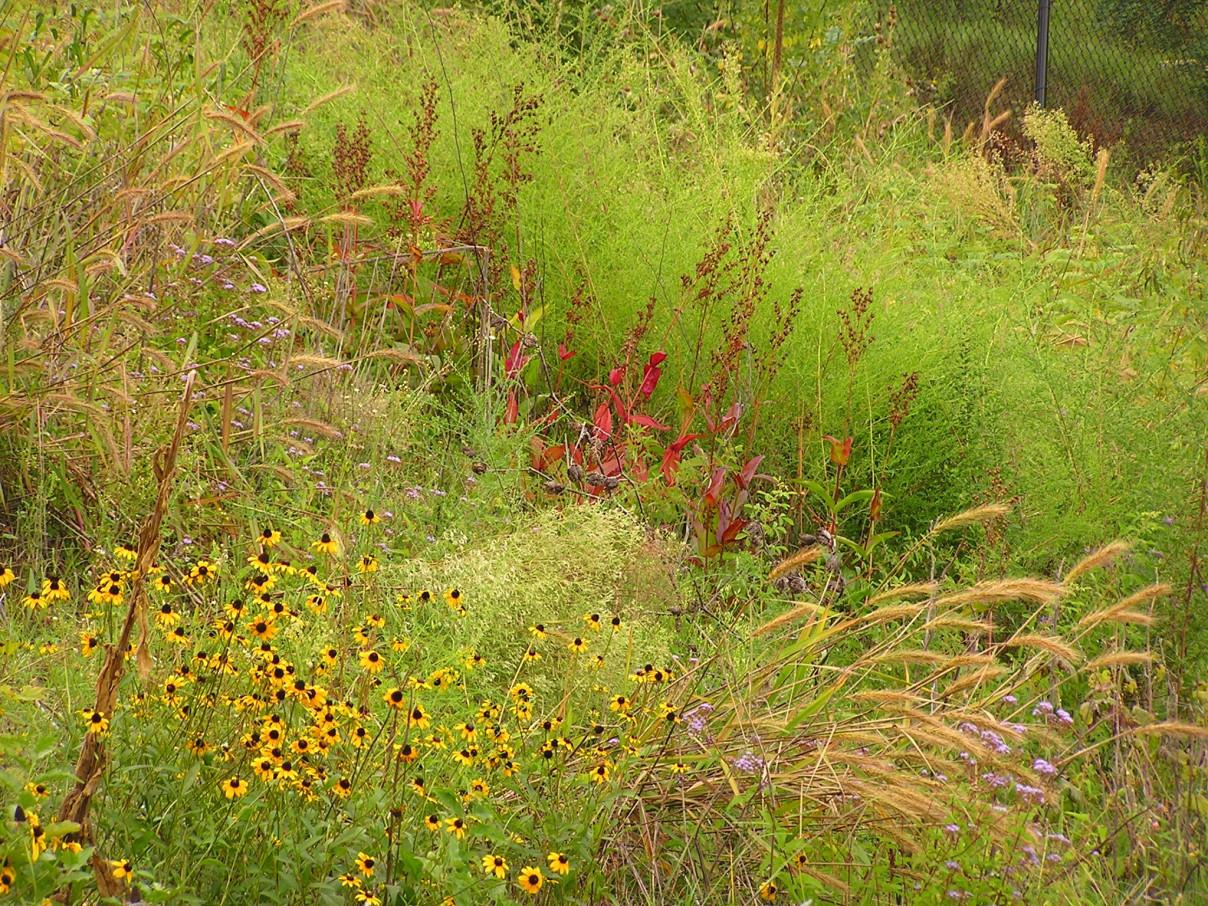Planting a meadow with Maryland native plants
Most Maryland residents who invest their time and money in meadow planting experience disappointment and failure in the end. Two of the challenges specific to Marylanders are:
- bad meadow making instructions
- commercial shortage (absence, actually) of locally native seeds
Until these problems are addressed, the University of Maryland Extension Home & Garden Information Center (HGIC) is recommending that homeowners try smaller meadow projects using the following, modular approach:
- In late winter, select a small lawn area of only a few hundred square feet.
- Remove the turf and the topsoil underneath it. This eliminates weeds and the weed seeds that would compete with your meadow. Native meadow plants are generally happier growing on the poor soil beneath your topsoil anyhow.
- Have a long-term plan for keeping the lawn grasses out of your meadow. Most lawn grasses cannot be stopped by a simple mulched path. Lawn mowers must always side-cast clippings away from the meadow.
- Order plugs from a nursery that specializes in locally native plants. Look for a nursery that can tell you which ecoregion you are in, and which ecoregion their plants were sourced from. Such a nursery will be able to advise you as to the species appropriate for a meadow given your location and site conditions, including deer pressure.
- The desire to plant flowers is strong, however stable meadows are composed of 50 to 70% grasses. Order more grass plugs than flower plugs.
- Expect to pay somewhere around $1 per plug, depending on size and species, and to plant one plug per square foot. This high density provides for quick canopy closure by the natives, thus reducing weed competition.
- Plant your plugs. Water the plugs as needed over the next few weeks, until they are established, but do not fertilize. Mulch is not appropriate for dry sunny meadows, but can be useful for shade meadows. Imported mulch often contains weed seeds.
- Keep a close eye on your meadow during the first year. Learn to distinguish the native plants from the weed species that will try to invade the meadow.
- Your young meadow won’t flower much the first year.
- Get to know the seeds of your meadow plants. Your seeds are building up the soil-seed-bank. In future years, when there is a disturbance in your meadow, the seeds that germinate will be those of desirable meadow species.
- Learn what the seedlings of your plants look like so you don’t pull them.
- The seeds produced by the first module can be used to sow subsequent modules. Harvest seed-bearing stems and place them upside-down in paper bags to dry. Store the bags in a dry place, safe from breezes and mice. Over the next few weeks, seeds will fall from the stems into the bags.
- In the fall, remove the turf and topsoil to create the next module. If you think you might also like to plug the next module, fall is the ideal time to order your plugs.
- In late fall or early winter, sprinkle your seeds over the soil. Scratch them into the soil very shallowly, 1/8” or less. Then tamp the soil gently with your feet and water. A light covering of clean straw can be beneficial, but make sure only to purchase straw that is weed-seed free.
- In the spring, monitor the germination of the seeds you have sown, and plant any additional plugs you may have ordered. This brings you full circle!
- By repeating this cycle, you can add new modules to your meadow each year.
Books you may find helpful
- Cullina, William. 2000. New England Wildflower Society Guide to Growing Wildflowers of the United States and Canada.
- Cullina, William. 2008. Native Ferns, Moss, and Grasses.
- Phillips, Harry R. 1985. Growing and Propagating Wildflowers. UNC Press.
- Stein, Sara. 1993. Noah's Garden: Restoring the Ecology of Our Own Backyards.
- Weaner, Larry. Garden Revolution. Timber Press.
